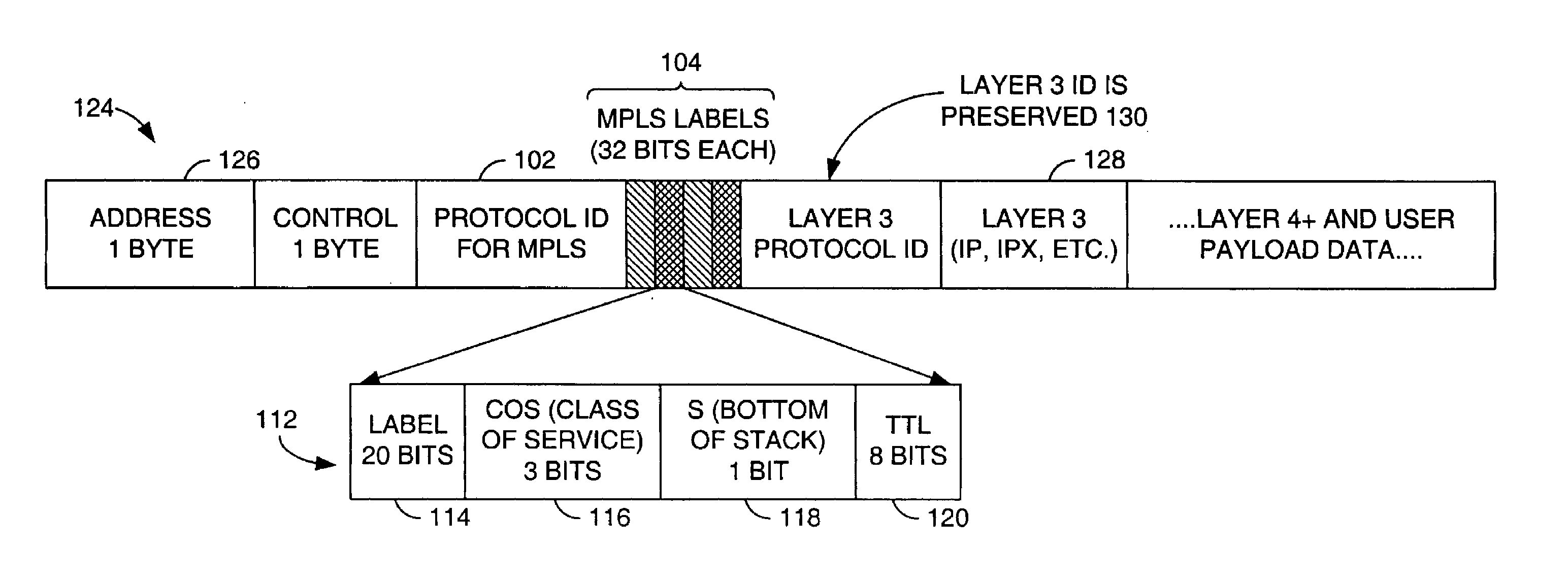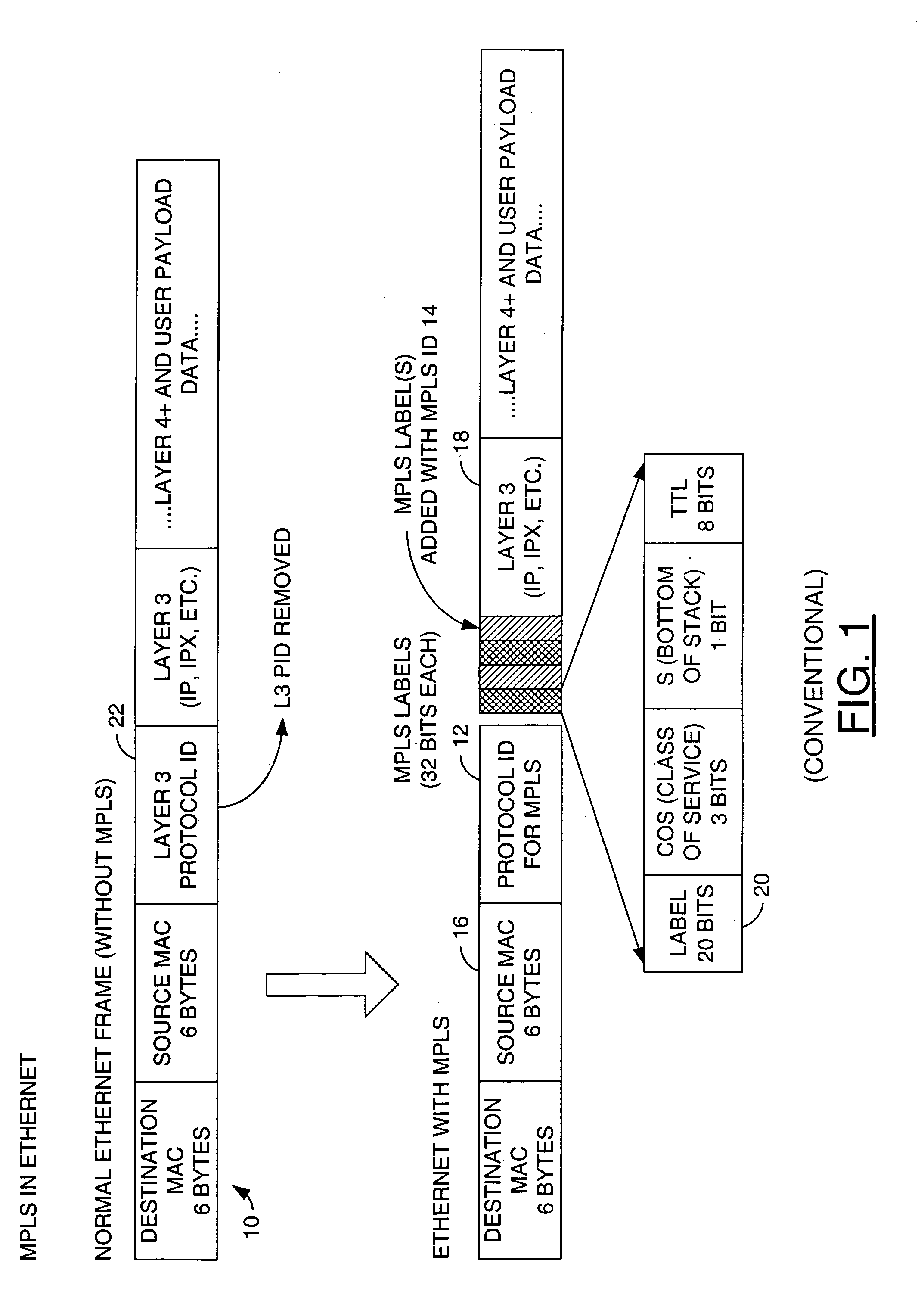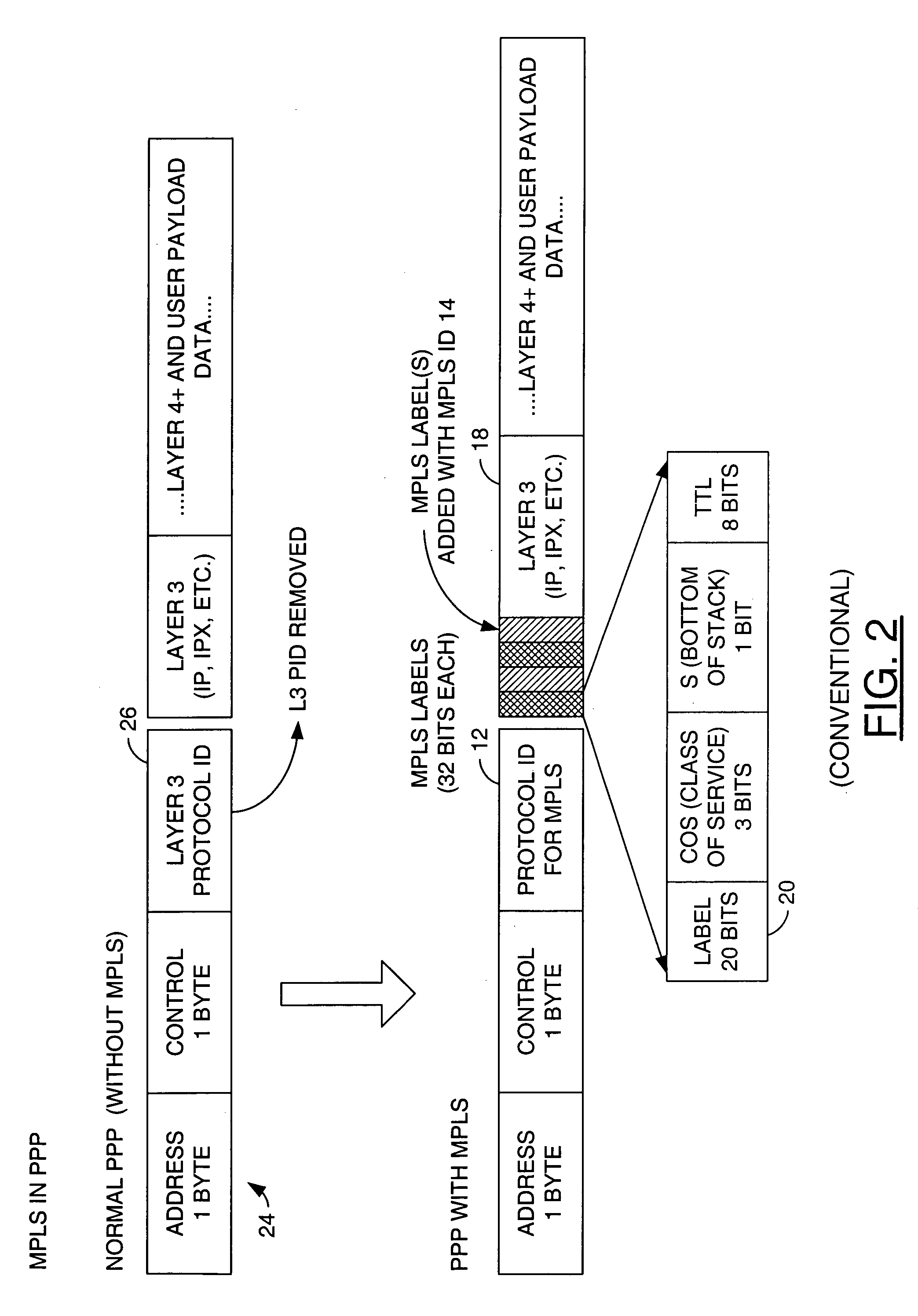Technique for multiprotocol transport using MPLS (multi-protocol label switching)
a multi-protocol, label switching technology, applied in the direction of data switching networks, digital transmission, electrical equipment, etc., can solve the problems of limited support for multi-protocol transport in mpls, inability to efficiently utilize different paths through the ip network, and difficult task of managing local network routing tables, etc., to achieve more scalable hardware and software solutions, reduce network resources, and reduce costs
- Summary
- Abstract
- Description
- Claims
- Application Information
AI Technical Summary
Benefits of technology
Problems solved by technology
Method used
Image
Examples
Embodiment Construction
[0021]Referring to FIG. 3, a drawing is shown of an Ethernet frame in a Multi-Protocol Label Switching (MPLS) protocol 100 in accordance with a preferred embodiment of the present invention. The MPLS protocol is generally defined in the document, “Multiprotocol Label Switching Architecture”, Internet Engineering Task Force (IETF), Reston Va., Request For Comment (RFC) 3031, hereby incorporated by reference in its entirety. The MPLS protocol is generally modified by the present invention.
[0022]Modifying the Ethernet frame for the MPLS generally comprises adding a field 102 and a stack 104 to the Ethernet frame. The field 102 may be implemented as an MPLS protocol identification field as defined by the RFC 3031. The stack 104 may be implemented as an MPLS label stack as defined by the RFC 3031.
[0023]The MPLS protocol identification field 102 and the MPLS label stack 104 may be inserted into the Ethernet frame between a field 106 and a field 108. The field 106 may contain an Open Syste...
PUM
 Login to View More
Login to View More Abstract
Description
Claims
Application Information
 Login to View More
Login to View More - R&D
- Intellectual Property
- Life Sciences
- Materials
- Tech Scout
- Unparalleled Data Quality
- Higher Quality Content
- 60% Fewer Hallucinations
Browse by: Latest US Patents, China's latest patents, Technical Efficacy Thesaurus, Application Domain, Technology Topic, Popular Technical Reports.
© 2025 PatSnap. All rights reserved.Legal|Privacy policy|Modern Slavery Act Transparency Statement|Sitemap|About US| Contact US: help@patsnap.com



